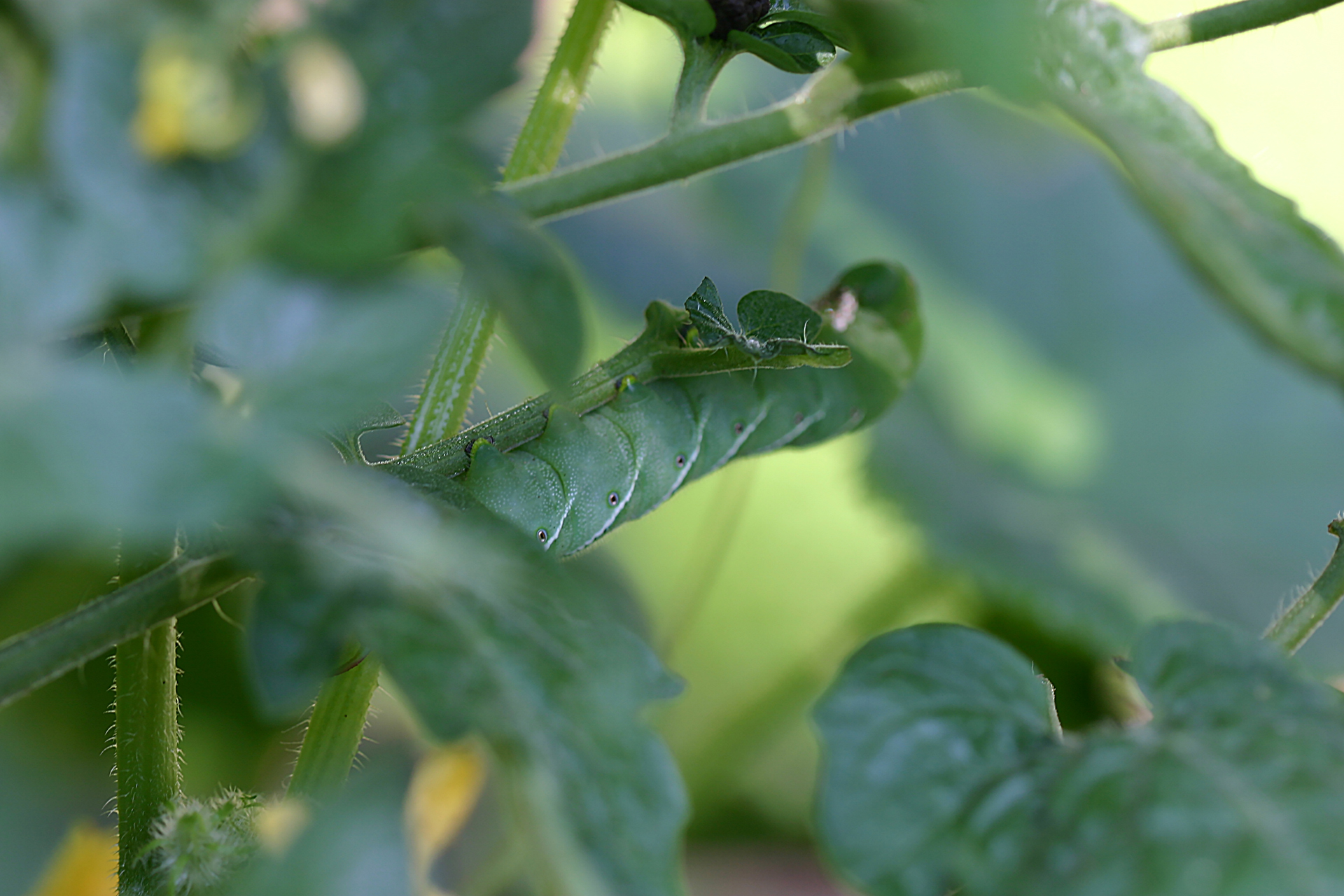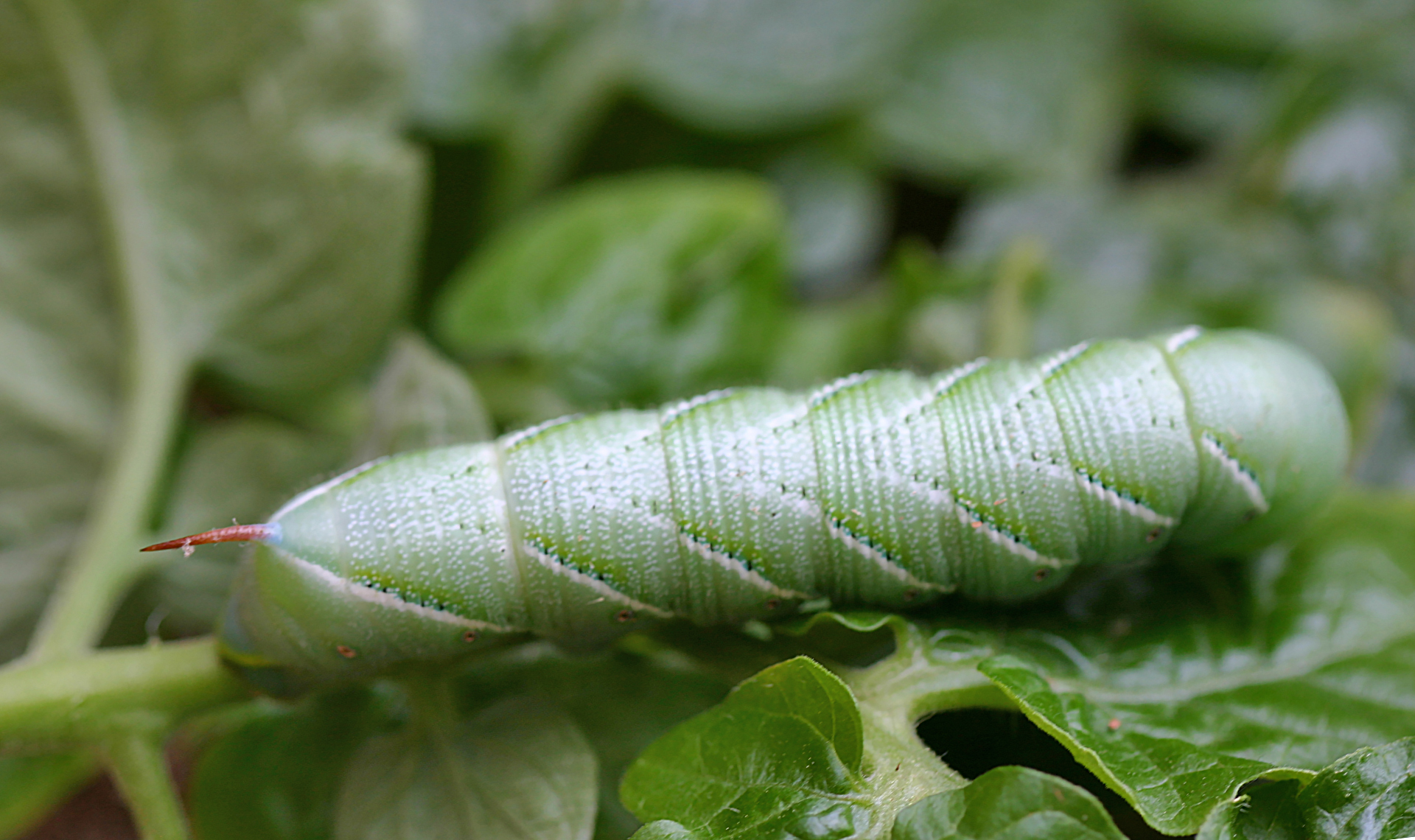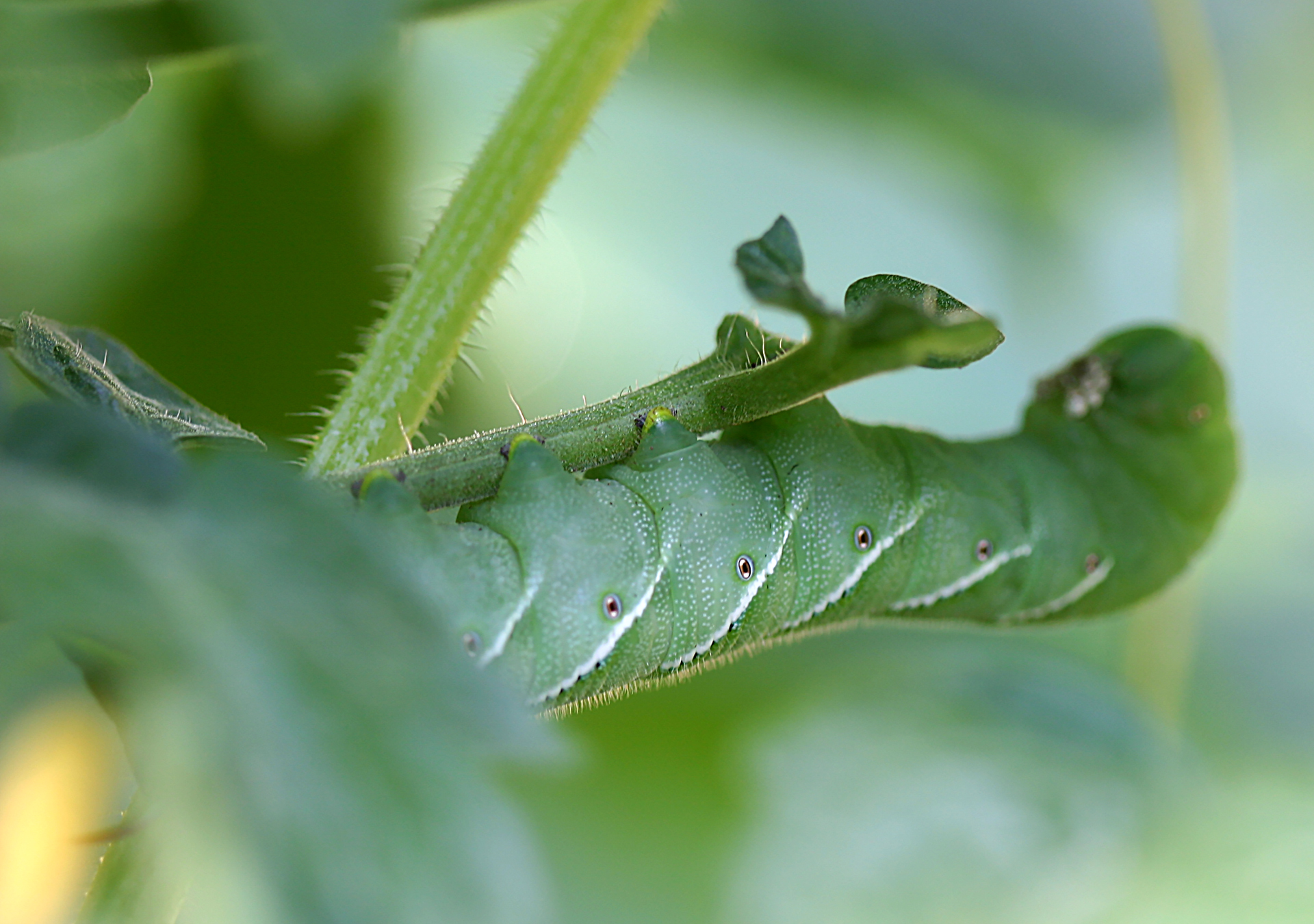Spring is here, and April showers bring May flowers, so the adage goes; but fruits and vegetables are also thriving in countless gardens in the northern hemisphere — and one might not even initially think about the Manduca sexta, which is also known as the as the Carolina sphinx moth or the tobacco hawk moth…
Sunday Morning Photograph April 10 2022: The Tobacco Hornworm.

…but when it is in its larva stage, it is commonly referred by the informal name of the tobacco hornworm, whose purpose and goal seems to be to voraciously forage on tomatoes and tobacco — as well as eggplant, pepper, potato, and moonflower plants — until they are destroyed.

The tobacco hornworm can be easily identified by its seven white diagonal lines with a black border at the first seven abdominal segments and black spots lining each of their white stripes — as well as its ominously red or green dorsocaudal horn with a red tip on its tail. Despite this horn, tobacco hornworms are considered docile and do not sting or bite.

The tobacco hornworm can easily be confused with the tomato hornworm, as both look similar in appearance — but the tomato hornworm has eight white markings which are shaped like the letter V with no borders; and they have dark blue or black horns.

Final Boarding Call
I have to say that I had no idea that tobacco hornworms were attempting to eat the tomatoes in my garden over the years, as I thought they were tomato hornworms. They are fairly easy to remove, however — and hopefully, you have never had the displeasure of seeing a really fat one which had been “squished” to the point of oozing thick green liquid.
Certain species of wasps are also known to be a form of pest control and keep both tobacco hornworms and tomato hornworms in check.
Please click here for a complete list of the Sunday Morning Photograph series of articles at The Gate.
All photographs ©2009 by Brian Cohen.

